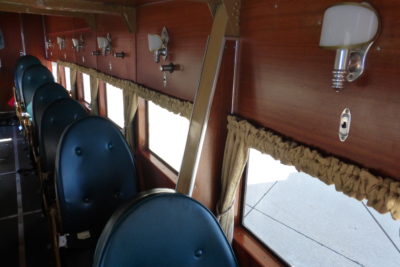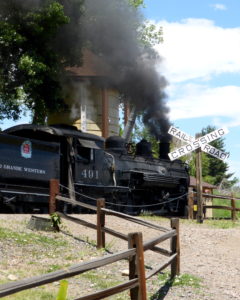In-person research engages your senses.
While historic re-enactments aren’t history, they convey vivid details that escape Wikipedia.
Two weeks ago I took a short flight on a Ford Tri-Motor, an airliner from 1928. Books and online articles had told me it was loud. But they failed to capture the roar of the 450-horsepower radial engines.

They’d told me a model 5-AT Tri-Motor carried twelve passengers, but gave me no sense of how narrow the aisle, or how steep the walk to the front of this tail-dragging aircraft.
As I watched the pre-flight prep, I noticed where a mechanic added oil — a lot of it — to the three engines. As I sat in the cockpit, I saw how the pilot first had to reach up, over his shoulder, to prime the engines.
Toward the end of our short flight, I began to feel engine heat radiating into the cabin. That’s an experience I know from driving Model A Fords.
Years as a passenger in jet airliners had accustomed me to fast, sharp takeoffs. Airliners of 1928 took to the sky much more gently.
 This past weekend, I spent hours at a railroad museum that was giving rides in 1890s coaches pulled by a 1930s, coal-burning steam engine. Watching a train in an old movie doesn’t come close. In person, you can stand nearby and feel the heat from the locomotive. You hear not only steam’s hiss, but also the roar when a relief valve opens. Letting off steam, indeed.
This past weekend, I spent hours at a railroad museum that was giving rides in 1890s coaches pulled by a 1930s, coal-burning steam engine. Watching a train in an old movie doesn’t come close. In person, you can stand nearby and feel the heat from the locomotive. You hear not only steam’s hiss, but also the roar when a relief valve opens. Letting off steam, indeed.
A movie can never quite convey the rocking of a railroad car beneath your feet, especially as you try to walk through the aisle.
Air thick with coal smoke involves not merely its appearance and texture, but especially its unique smell. If you’re downwind when a coal-burning steam train passes, you know.
If you want your readers to experience deeply your story’s unfamiliar action and exotic setting, you need to know them yourself. Onsite research helps.


